Punjab: a region with a difficult past and the present
Categories: World
By Pictolic https://pictolic.com/article/punjab-a-region-with-a-difficult-past-and-the-present.htmlCovering an area of India and Pakistan, the Punjab plain is almost 100 thousand sq. km. as a result of division of British India in 1947, the border, the plains of Punjab was divided with 65 % of the territory of Punjab remained in India and built the homonymous state in the Indian Union. The Western region of the Punjab with Lahore became part of the state of Pakistan, where they were formed a separate province. As a result of dividing the plains of Punjab became the site of mass forced immigration due to the bloody clashes.
As the richest and most populous province of Pakistan, Punjab is the leader of the country in terms of welfare. Thus there is a constant fierce confrontation of the authorities with the Taliban. Reflecting the dual nature of Pakistan – modernity and development against violence and intolerance — this region is a unique prism through which to examine these dynamics in a world ruled by force. Punjab provides a symbolic and practical point of contact between India and Pakistan which could cure their warped relationship the two countries through the everyday relations between ordinary people.
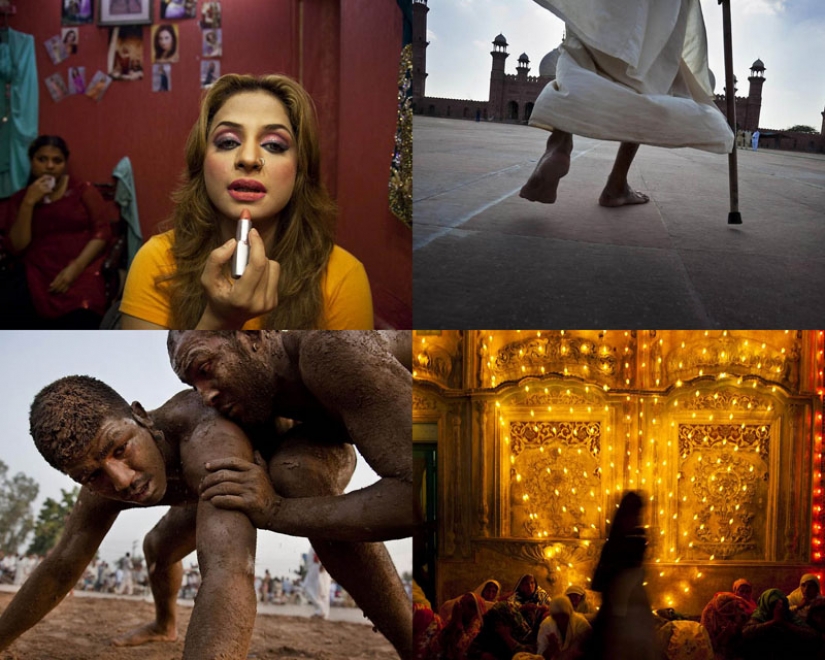
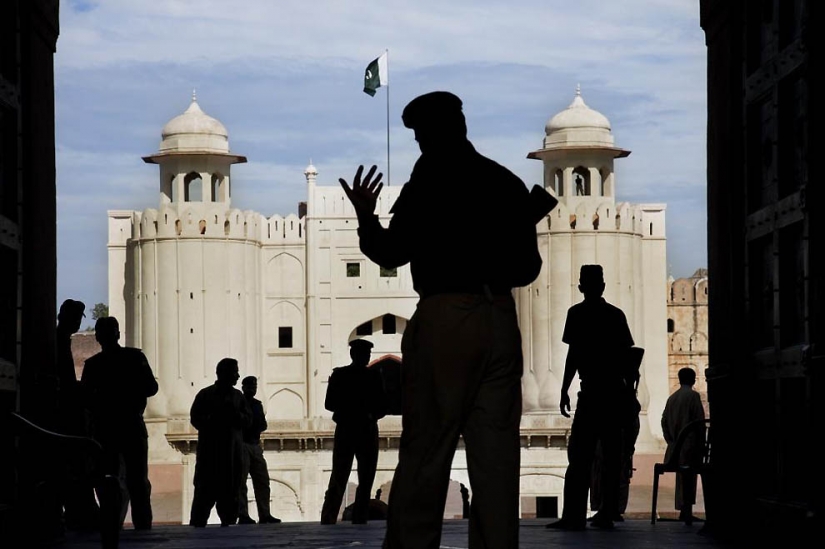
1. Armed guards during Friday prayers in the Badshahi mosque, the second largest mosque in Pakistan and South Asia and the fifth largest in the world. This is the most famous place of Lahore and its main attraction, symbolizing beauty, passion and grandeur of Mughal era. (Ed Kashi)
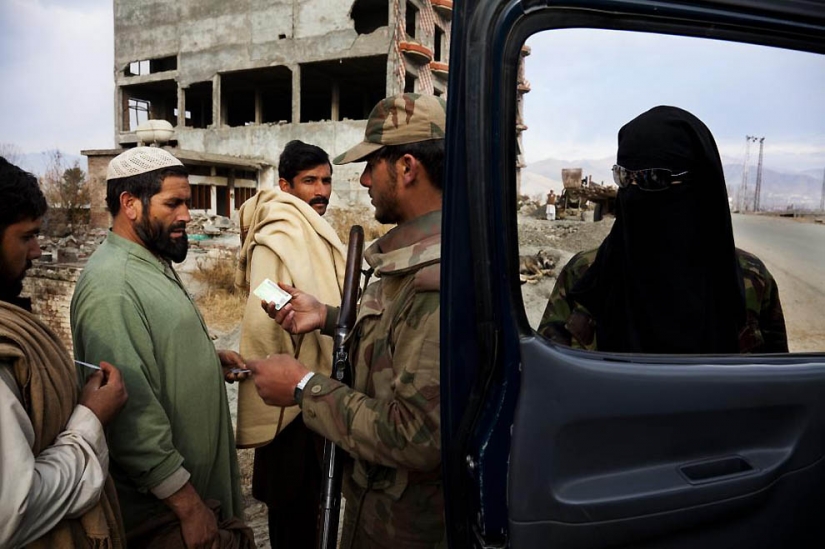
2. In Mingora and adjoining areas in SWAT valley, the Pakistani army soldiers check documents at a checkpoint after the attacks the Taliban in may 2009. (Ed Kashi)
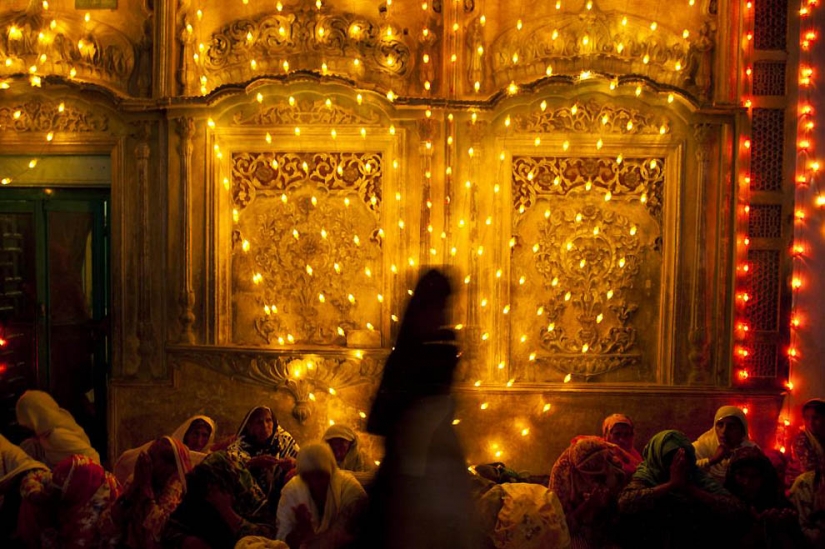
3. The figure in the veil in the temple Khwaja Sufi Ghulam Farid in kot mitjana beach. the. Built in 1796, the temple is one of the most important in this part of Punjab. Farid, a famous Sufi of the 18th century, is considered one of the greatest poets saraiki and patron of the Punjab. (Ed Kashi)
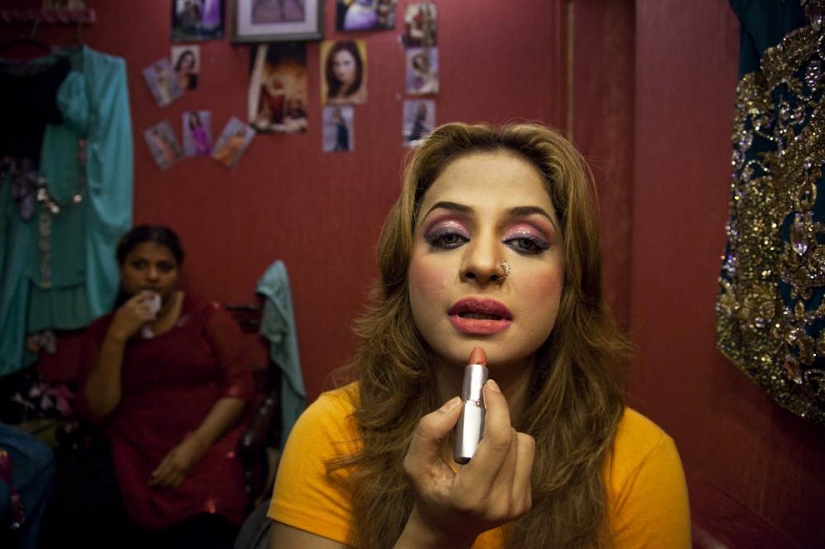
4. Actress Nida Chaudhry is preparing to go behind the scenes of al Falah in Lahore. This theatre, known for its racy views, was bombed by extremists in early 2009. However, the performances are still ongoing, and the Palace is crowded in the evenings, men and the occasional couple looking for new sexual sensations. (Ed Kashi)
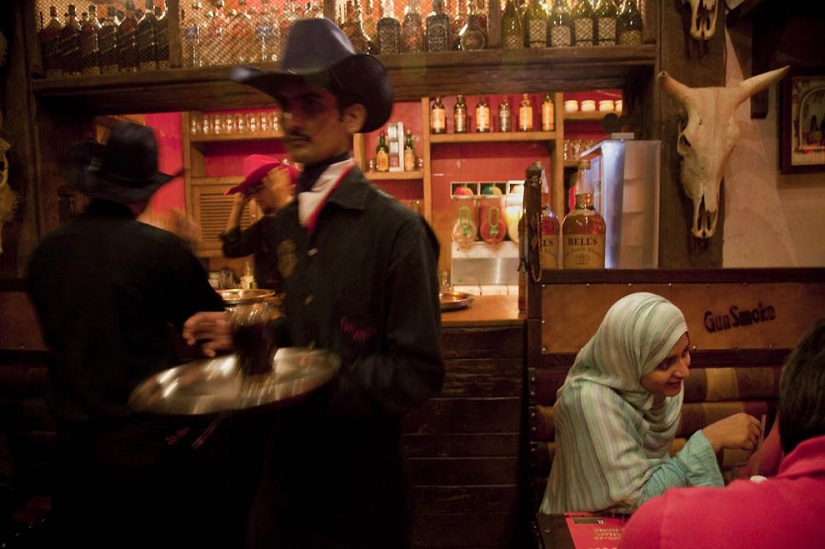
5. "Gunsmoke Diner" - themed restaurant, mostly for the wealthy youth of Lahore. This is one of the many new and modern catering places in the cultural capital of Pakistan in the heart of Punjab, opened a few years ago. Elite food is American-style waitresses in costumes of cowboys, big hats, serving drinks to the sounds of Western pop music. (Ed Kashi)
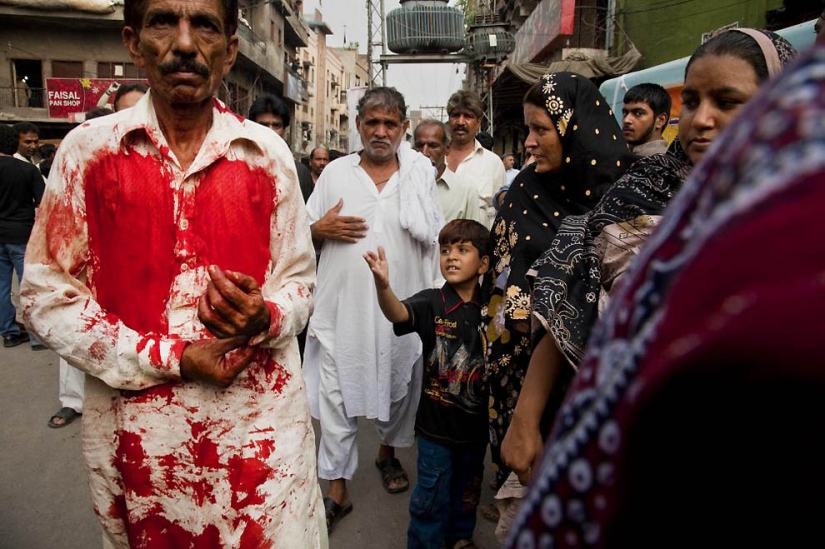
6. Shea symbolizes the death of Ali, one of the two most revered figures in Shiite Islam. Every year the Shiites, who constitute 30% of the population of Punjab, overlook the narrow streets and alleys of the old city of Lahore, beating his chest with knives on a chain in solidarity with the victims Hazrat Ali, grandson of Muhammad Ali. (Ed Kashi)
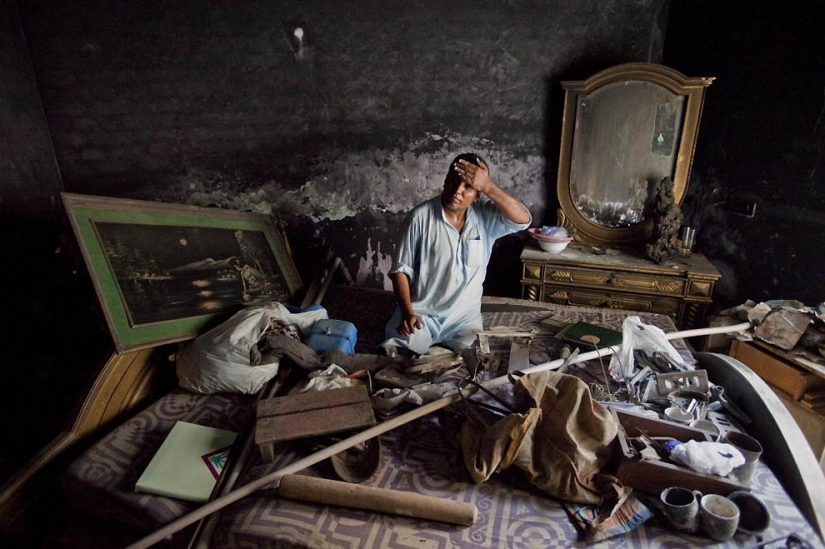
7. Gojra is a city with a population of 300 thousand people in Central Punjab with the Christian community of three thousand people. 1 Aug 2009 there began a rebellion, and a crowd of Muslims burned the homes of 76 families and killed 7 people. According to rumors, the crowd provoked a group of Christians who tore the Koran and used it as confetti at one of their weddings. Led showdown was a member of the SIPA-e-Sahaba military force involved in other similar attacks in Punjab. On the photo: Shabaz Hammed inspects a burnt bedroom where carbon monoxide poisoning killed seven of his relatives. (Ed Kashi)
8. Kushti, or Pehlwani, is a martial art and fighting style, common in India, Pakistan and Bangladesh. In Punjab over 500 years, this sport is a part of Punjabi culture. However, the Taliban and Islamist extremists this kind of sport is considered undesirable, because the bare torso, soprikasalis bodies, excitement, music and Sufi mysticism, which are associated with this sport. (Ed Kashi)
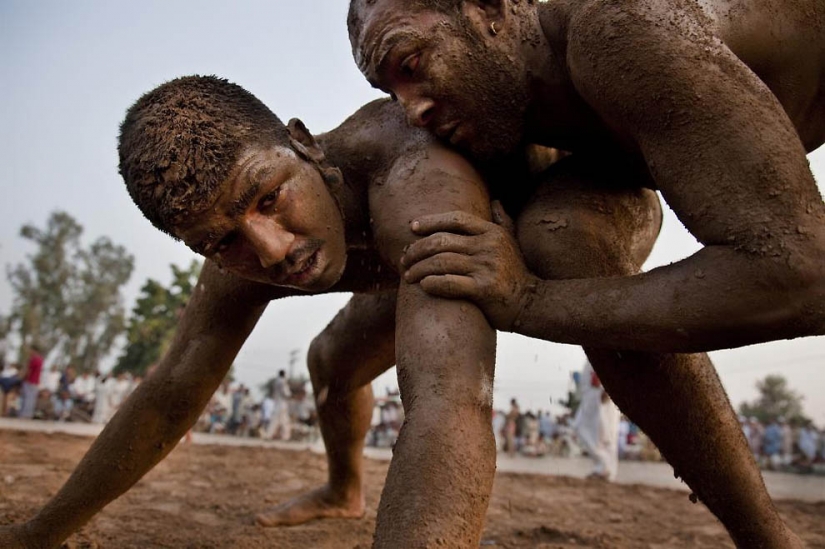
9. Feudal landlords for centuries was the basis of the economic and political structure of rural areas of Punjab. Although times have changed, particularly in Punjab, where due to land reforms, the number of landowners decreased dramatically in the area are still many important and influential landowners. One of the family Waving. Settled in Multan many centuries ago, the current leaders own more than 404 hectares of land. The Malik Fazal Abbas Waving his 38 years, he is one of the most powerful and influential local landowners. His reputation stretches to the Lahore, but the city is 400 km from his home. All the time he dedicates more than 50 horses, a private zoo, which has lion, and cars. He is a traditionalist and has recreated a traditional Punjabi village in the suburbs of Multan. In this photo, he works the dance with a horse is one of his favorite pastimes. (Ed Kashi)
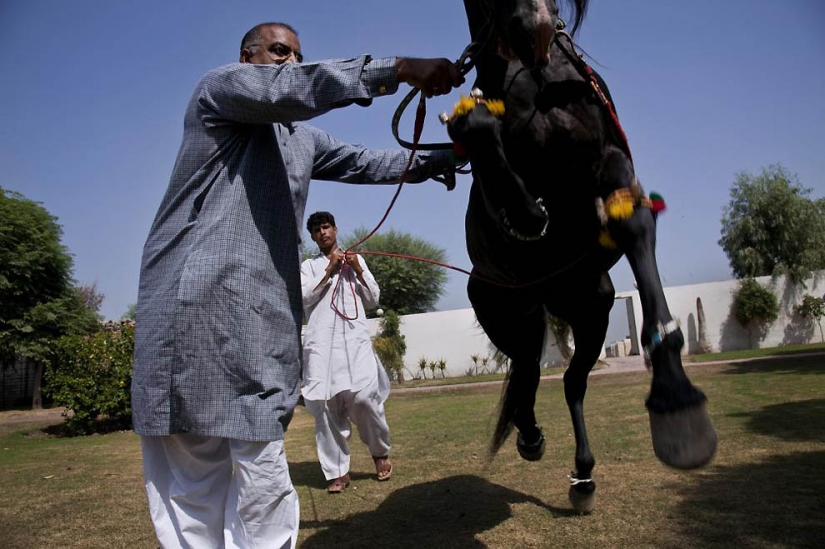
10. Nusrat al Marasca in Gujranwala – school Deobandi with the religious parties opposed the introduction of American troops in Afghanistan. They are ideological and political supporters of the movement "Taliban". In this school of 1500 students, 300 of whom are full boarders, receiving free food and shelter. In this photo boarders at lunch in the common room, the floor is carpet. (Ed Kashi)
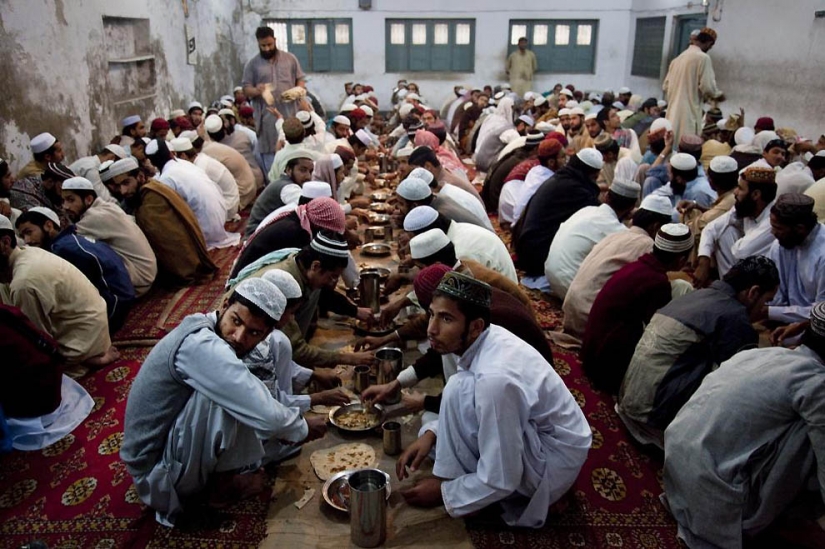
11. The second largest madres in Punjab, Khair-Madaris – school Deobandi teaching a strict form of Islam. Most students who give free housing and Board, will become imams or teachers. Although it is mostly Islamic Seminary, the philosophy of these schools is quite strict and similar to the rigid doctrines of Wahhabism. In this school of 2,000 students, and it is considered a normal school, which promotes progressive approaches to learning. Although this school does not teach jihadism, it is considered dangerous for the Punjabi community and promotes a strict form of Islam, foreign to the province. In this photo, students stand in line to see the results of their applications for entry into school. (Ed Kashi)
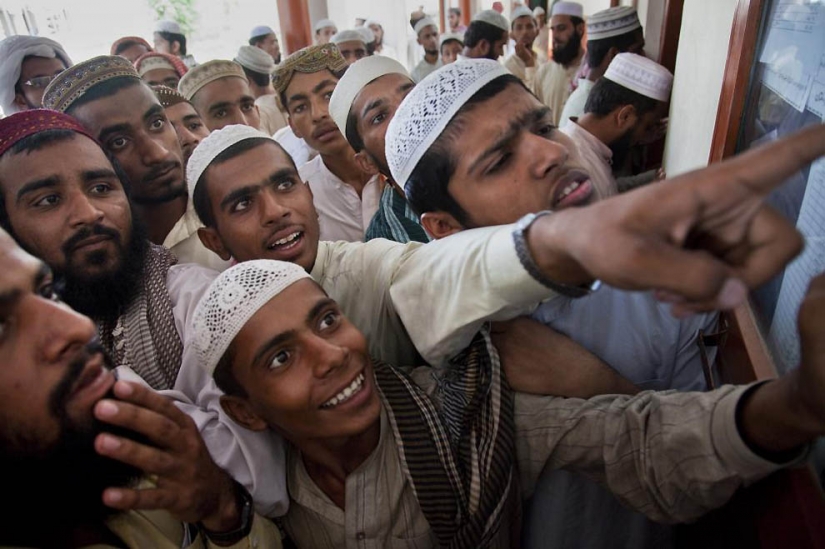
12. A believer in the courtyard of the Badshahi mosque in Lahore during Friday prayers. (Ed Kashi)
Recent articles

Many have heard about this disease, like rabies, can even say that it is a result of the animal bite, and the victim will have to ...

The upcoming trip is always so joyful and exciting, and it seems that nothing can spoil the upcoming vacation! But drawing up a ...
Related articles

Thousands of years ago, Chinese builders built settlements where it was possible to move only by boat. In Europe, you can feel the ...

The most high-flying military parades were held in the early 70s in India. On Independence Day, iron cars in tuning from folk ...

Most scientists believe that people borrowed kisses on the lips from birds. The process of feeding the parents of the chicks from ...

The scooter, once considered nothing more than a child's toy, has become a full-fledged personal transport these days. Our streets ...